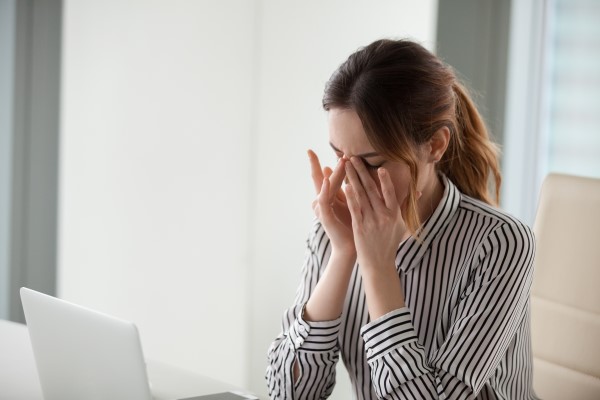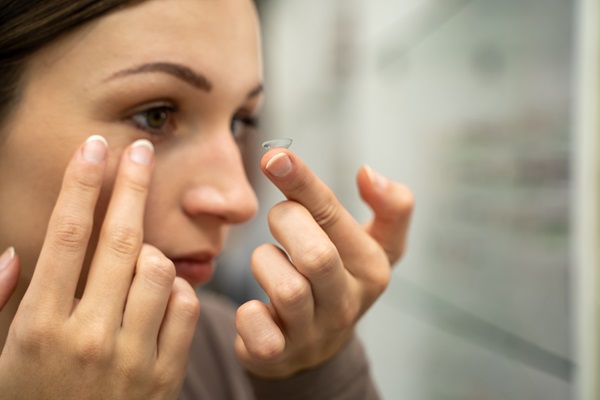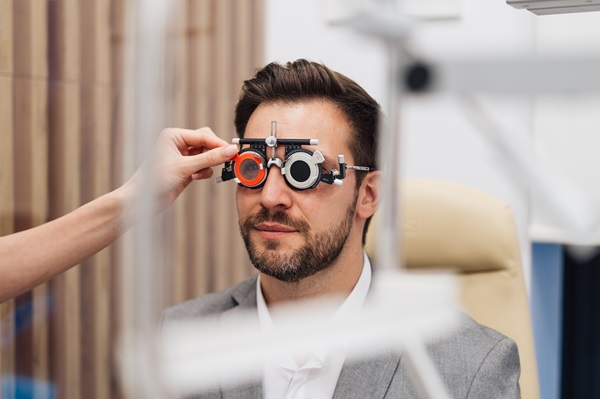Methods for Dry Eye Treatment

Dry eye affects approximately 7% of the U.S. population (16.5 million people), according to the American Optometric Association. It can cause significant daily disturbances and be a sign of a more severe eye concern if left untreated. In this review, we discuss the various methods and approaches to dry eye treatment, both at home and from an eye care professional.
Methods and approaches for dry eye treatment
A treatment plan should be personalized according to what works best for the individual patient. There are no cookie-cutter or one-size-fits-all approaches. However, there are certain treatments that are more common. Here, we discuss lifestyle changes, home remedies, non-prescription products, prescription medication, and in-office procedures for dry eye treatment.
Lifestyle changes
In many cases, lifestyle changes are enough to manage dry eye in the long term. Each person with dry eye should evaluate their daily routine and determine if there are habits that may be exacerbating the problem. For instance, dry eye may be caused by excessive exposure to dirt and debris. For those who work an outdoor job, simply wearing protective eyewear may be enough to prevent dry eye. It is also vital to reduce the amount of time spent in front of digital screens, particularly for those who work from their computer.
In addition to changes in environmental and work habits, patients should manage any underlying conditions, such as diabetes. Habits like smoking and tobacco use may negatively contribute to the development of chronic dry eye. Patients can also benefit from regular checkups with their eye doctor.
Home remedies
It is essential to keep your eyelids clean for dry eye prevention, particularly for individuals with blepharitis. In addition to washing them regularly with mild soap, it can help to apply a warm (and wet) compress for several minutes. This helps reduce inflammation, irritation, and dry eye.
Non-prescription products
Non-prescription products are among the most common ways to manage (and treat) dry eye. Specifically, artificial tears are ideal for keeping the eyes lubricated throughout the day and subsequently, preventing dry eye. Although artificial tears are available over the counter, you should check with your eye doctor before using them.
Also, remember that artificial tears do not treat the underlying cause of dry eye, but rather only temporarily deal with the symptom. Ointments are also available, and these are stronger than artificial tears. An eye doctor may recommend ointments if the patient struggles with dry eye throughout the night.
Contact lenses
There are special contact lenses that eye doctors may recommend to help patients with chronic dry eye. Specifically, therapeutic contact lenses lubricate the surface of the eye and relieve much of the discomfort that is caused by dry eye. In essence, these contact lenses trap moisture and allow for more tears to remain in the eye throughout the day.
Prescription medication
There are also prescription solutions available from an eye doctor for patients who do not see improvements from over-the-counter products, home remedies, and lifestyle changes. Common prescription medications for dry eye treatment include:
- Medicines for eyelid inflammation
- Eye inserts (hydroxypropyl cellulose)
- Eye drops for cornea inflammation (corticosteroids)
- Tear-producing medication (cholinergic)
- Autologous blood serum drops
- Nasal spray for tear production (varenicline)
The recommended medication depends on what the eye doctor determines is the underlying cause of the dry eye symptom. For many patients, medications seek to treat that cause, given that dry eye is usually part of a larger issue. However, in other cases, the medication may simply provide a way to produce more tears.
In-office procedures
In-office procedures for dry eye are not that common. However, there are several procedures that eye doctors may recommend for certain patients who have chronic dry eye that has not improved through other means. Notably, the most common types of in-office procedures for dry eye are:
- Thermal pulsation therapy: This procedure involves massaging the eyelids to help the meibomian glands produce oil.
- Intense pulsed light therapy: This involves using light therapy to essentially melt the blockage of the meibomian glands.
- Punctal occlusion: This involves temporarily closing the tear drain (known as the punctum) to help keep more tears in the eyes.
Schedule a visit to discuss dry eye treatment options
Are you dealing with chronic or recurring dry eye? If so, then please contact our office today. We can answer your questions and address your concerns, and we can also schedule a consultation time, during which we can review your symptoms and help put together a treatment plan.
Get more information here: https://www.texasoptical.net or call Texas Optical at (214) 771-7333
Check out what others are saying about our services on Yelp: Read our Yelp reviews.
Recent Posts
A contact lens exam is slightly different from an eyeglass prescription exam. Though both correctives are great for helping you see clearly, contact lenses can be a better fit for certain individuals, such as those who live more active lifestyles. Take a closer look at what you can expect during your upcoming examination.A general eye…
Regular eye exams are crucial for maintaining overall health for people of all ages. By establishing a relationship with an optometrist, you not only protect and enhance your vision but also safeguard against potential health issues. This comprehensive guide highlights the benefits of maintaining a connection with our office, a practice that benefits everyone in…
Your eye health is an essential part of your overall health. Regular checkups with an eye doctor can often prevent many eye issues and complications, catching them in their early stages. Here are three key signs that it might be time to visit an eye doctor.Eye discomfort can appear in many ways. While occasional eye…
Proper vision care can address eye strain and reduce its uncomfortable symptoms. An optometrist will also help to prevent future eye strain. Thus, while there are many ways to strain your eyes, there are many changes you can make to give them a break.Straining the eyes can bring all sorts of symptoms. As a result,…


